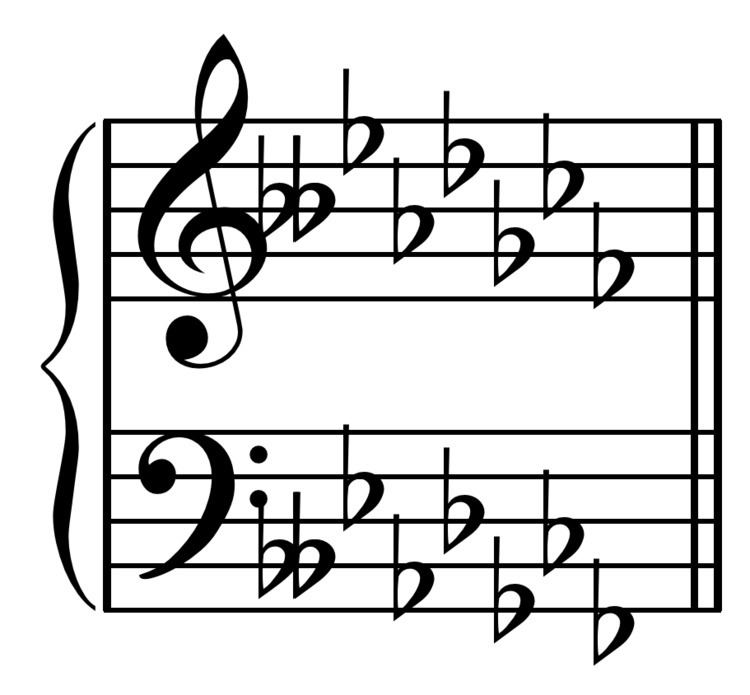 | ||
Relative key D♭ minorenharmonic: C♯ minor Parallel key F♭ minorenharmonic: E minor Dominant key C♭ majorenharmonic: B major Subdominant B majorenharmonic: A major | ||
F-flat major is a theoretical key based on F♭, consisting of the pitches F♭, G♭, A♭, B, C♭, D♭, and E♭. Its key signature has six flats and one double flat.
Its relative minor is D♭ minor, usually replaced by C♯ minor (see reason below) and its parallel minor is F♭ minor, usually replaced by E minor, since F♭ minor's four double-flats make it generally impractical to use.
Although F♭ major is usually notated as its enharmonic equivalent of E major, because E major has 4 sharps only as opposed to F-flat major's 8 flats (including the B), part of Richard Strauss' Metamorphosen uses F♭ major, which one commentator has called "a bitter enharmonic parody" of the earlier manifestations of E major in the piece. Beethoven also used F♭ major in his Piano Sonata No. 31, op. 110. In the first movement's exposition, the transitional passage between the first and second subjects consists of arpeggiated figuration beginning in A♭ major and modulating to the dominant key of E♭ major. In the recapitulation, the key for this passage is changed to bring the second subject back in A♭ major: the transitional passage appears in a key that would theoretically be F♭ major, but which is notated in E major, presumably because Beethoven judged this easier to read - this key being a major third below the key of the earlier appearance of this passage.
Another example of F♭ major being notated as E major can be found in the Adagio of Haydn's Trio No. 27 in A-flat major. The Finale of Bruckner's Symphony No. 4 employs enharmonic E for F♭, but its Coda employs F♭ directly, with a phrygian cadence through F♭ onto the tonic.
An example of F♭ major being used directly is in Victor Ewald's Quintet no. 4 in A flat major (Op. 8), where the entirety of the third movement is notated in this key.
The climax that occurs in the middle of Samuel Barber's Adagio for Strings resolves to F♭ major.
